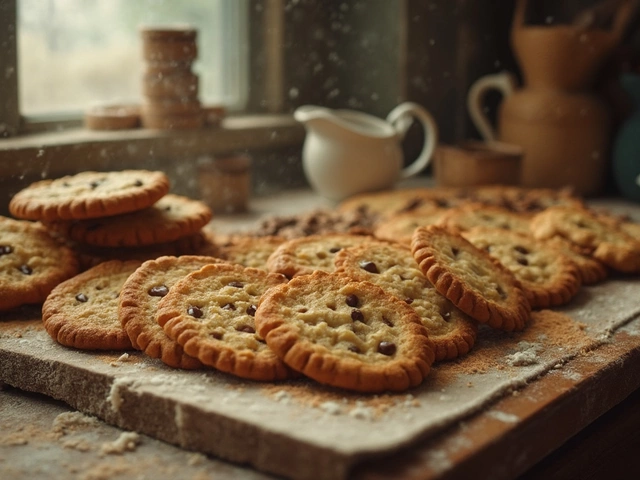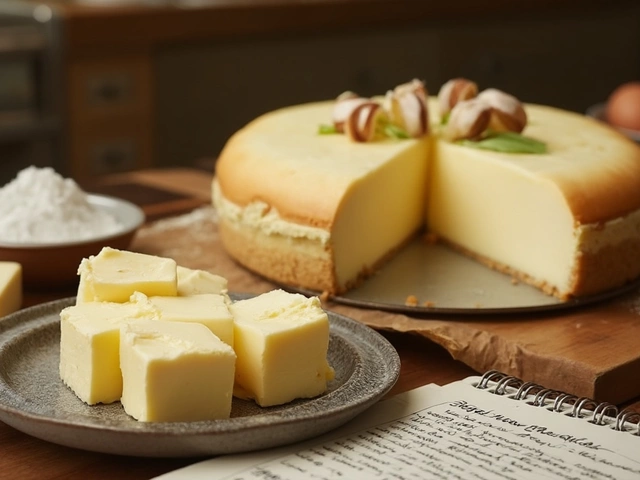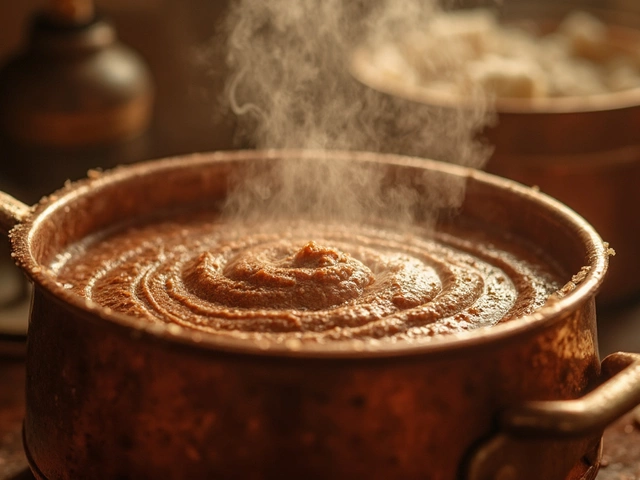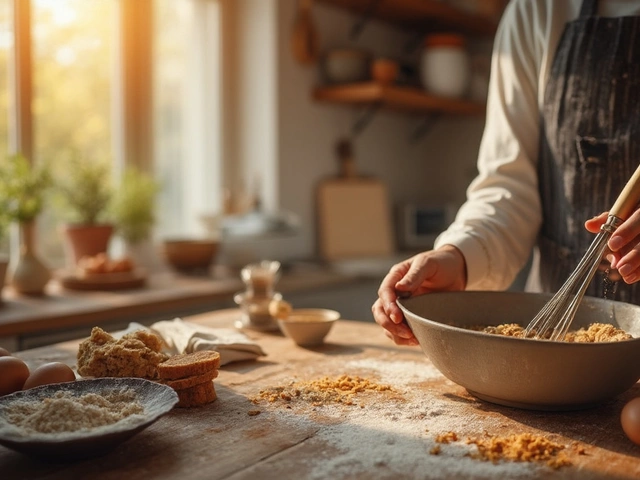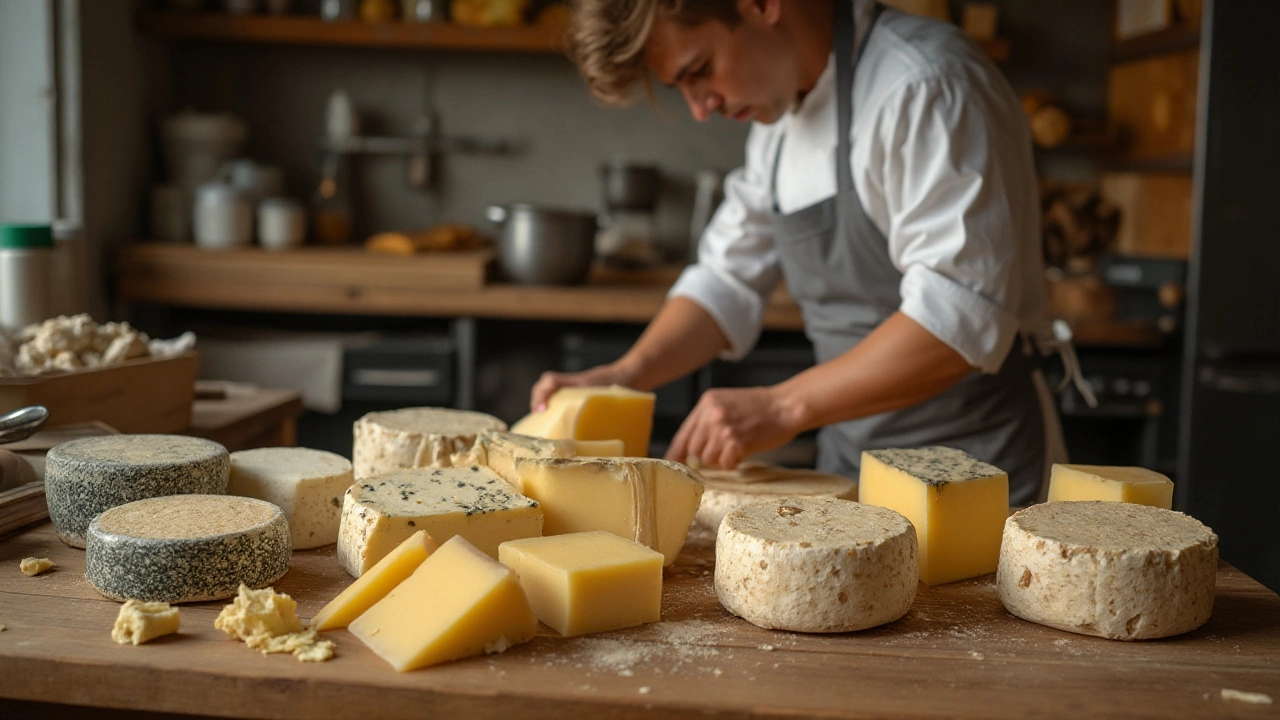
In the world of culinary arts, the unexpected often leads to delightful surprises. One such surprise is the use of moldy cheese in the classic Italian dessert, Tiramisu. At first glance, the strong, bold flavors of cheeses like blue cheese might seem at odds with the creamy, coffee-infused layers of this beloved dish. However, adventurous chefs have found that these contrasting tastes can create a symphony on the palate.
This article takes you on a journey through the history and intrigue of moldy cheeses, uncovering how these aged delights have found their way into the sweetest of creations. You'll explore the nuances of flavor pairings and gain insights into experimenting with moldy cheese in your own dessert repertoire. Prepare to challenge your taste buds and elevate your culinary creations.
- History of Moldy Cheeses
- Understanding Blue Cheese
- Moldy Cheese in Desserts
- The Tiramisu Connection
- Crafting Unique Flavor Profiles
- Tips for Cheese in Sweets
History of Moldy Cheeses
Long before the advent of refrigeration, humans discovered a remarkable method of preserving milk's richness: cheese-making. Among the intriguing variations of cheese that emerged over centuries, moldy cheese stands out for its bold flavors and unique textures. Historically, it is believed that the creation of moldy cheese was less about design and more about serendipity - nature's role in the cheese-aging process was embraced instead of shunned. The familiar veins of blue or green in cheeses like Roquefort and Stilton were first celebrated in medieval Europe, where caves provided the perfect environment for mold proliferation.
The earliest documented mention of moldy cheese dates back to Roman times, where it was described as a luxury food reserved for the affluent. In fact, Pliny the Elder, a Roman author, mentioned the aromatic pungency of Roquefort cheese in his 'Natural History.' This legacy continued and flourished in France, where strict regulations evolved to protect the integrity of their cheeses. During the Middle Ages, monks and farmers alike experimented with various methods, unintentionally crafting different moldy cheeses that became staples in regional cuisine. These cheeses were celebrated not just for their flavor but for their nutritional value in a time when sustenance was paramount.
The Science and Art of Aging
Fast forward to today, and we see that the art of crafting moldy cheese has become a precise science. The Penicillium fungi, responsible for the blue and green veins, were identified in the 19th century, allowing cheese-makers to cultivate it intentionally. This marked a turning point in cheese production, elevating moldy cheese from happenstance to a culinary masterpiece. The 20th century saw the development of controlled environmental conditions, allowing producers to achieve consistency and quality in every wheel of cheese. This systematic approach ensured that moldy cheese gained broader acceptance and admiration globally.
Behind each wheel of blue cheese or wedge of Stilton lies a story of tradition, trade, and a little bit of transgression. Its creamy textures and complex flavors continue to captivate new generations of gourmets. France, undoubtedly, has played a significant role in preserving and advancing the craft, with its cheeses like Roquefort achieving AOC (Appellation d'Origine Contrôlée) status, which protects and geographically identifies food products.
"Moldy cheese is like the soul of the earth encapsulated in milk," says renowned chef Hélène Darroze, capturing the essence of this age-old staple. Such rich history and nuanced production method ensure moldy cheese remains an intriguing player in the world of gastronomy.
The cultural embrace of moldy cheese endures today, from the elegant boards of fine dining establishments to audacious culinary experiments like integrating its nuanced tastes into desserts such as the unexpected but delightful Tiramisu twist. Cheesemakers and chefs alike continue to push the boundaries of how these ancient and audacious flavors can be paired, leading to a resurgence of interest in moldy cheese. After centuries, these bold and daring choices are not just about preservation but are now a testament to the endless creativity possible within the realms of our palates.
Understanding Blue Cheese
Blue cheese is an intriguing dairy creation that carries both a storied history and a unique culinary profile. Originating as an accident when mold spores found their way into cheese caves, blue cheese has since become a deliberate art form. The signature veins of blue-green mold running through the cheese are created by the Penicillium mold, which is added during the cheesemaking process. As the cheese ages, these molds grow and contribute to its distinct appearance and flavor. The mold spores give blue cheese that pungent taste and sometimes crumbly texture that divide opinions but undeniably intrigue gourmands across the globe.
There is a science to how this mold interacts with the cheese matrix. When the cheese is pierced with needles, it allows oxygen to enter and the mold to flourish, leading to an explosion of flavor development. This aging process not only intensifies the taste but also transforms the texture, creating a semi-soft product that pairs exquisitely with other bold flavors. Enhancing a dish like Tiramisu with blue cheese requires understanding its flavor profile—creamy, salty, and a bit spicy. Balancing it with the sweet and bitter notes of the dessert can add an unexpected twist.
"Without blue cheese, a chef misses an opportunity to add layers of complexity to dishes," suggests culinary legend Julia Child, placing it among the staples for the adventurous palate.
Blue cheeses are not created equal. Varieties like Roquefort, Gorgonzola, and Stilton each bring their own twist. Roquefort, for example, is known for its sharp and tangy profile, while Gorgonzola is often softer and creamier. Stilton boasts a rich, savory flavor that can range in intensity. These flavors can complement or contrast the other components of a dessert, turning a simple dish into a gourmet experience. A skilled chef knows how to wield these differences to their advantage, choosing the best match for their culinary vision.
Interestingly, blue cheese not only plays a role in savory dishes but also pairs well with sweets, fruits, and nuts, forming an innovative bridge between savory and sweet. This characteristic is why it has found a place, albeit experimental, in desserts such as Tiramisu. For those venturing into this culinary frontier, understanding these varied characteristics is key to successful integration. Pairing blue cheese with other strong flavors, such as coffee or a liqueur-soaked sponge, can highlight and enhance its natural tang, offering diners an extraordinary taste adventure.
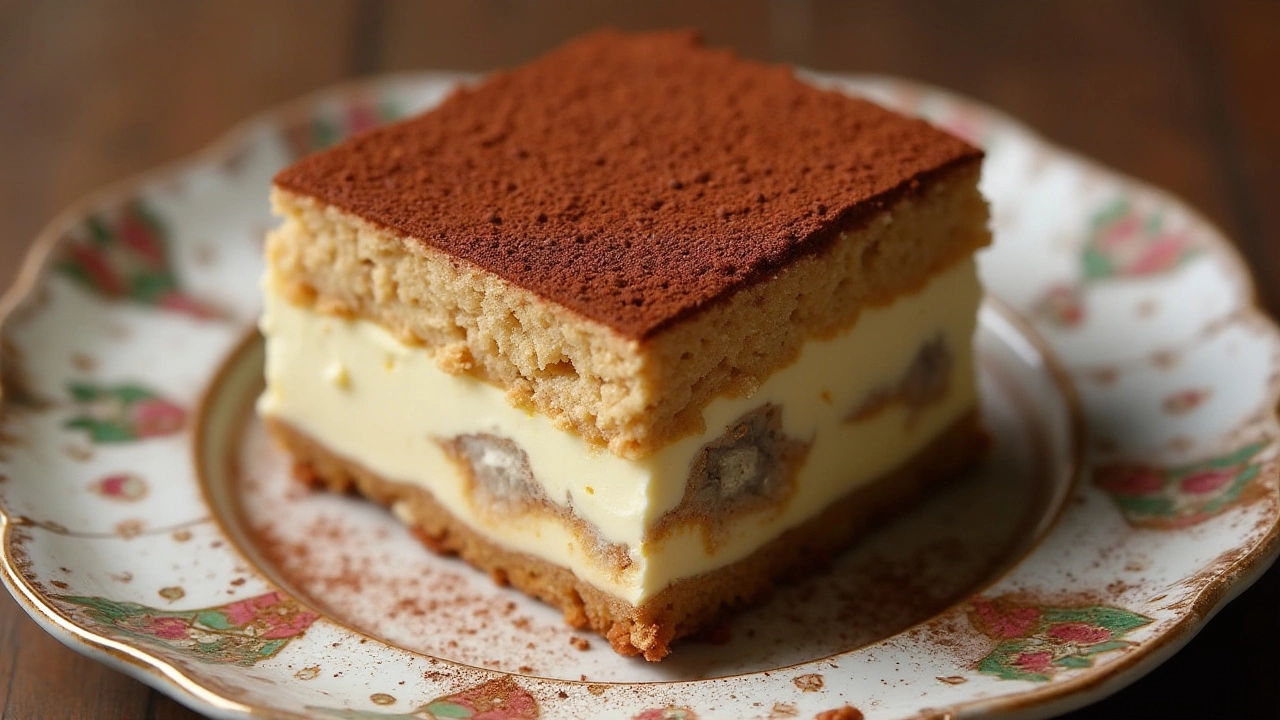
Moldy Cheese in Desserts
The integration of moldy cheese into desserts is a testament to the endless possibilities of culinary creativity. One might wonder how something known for its distinct, often pungent flavor could find harmony in a sweet dish. Yet, chefs around the world are taking risks, blending ingredients that challenge traditional boundaries. The result is desserts that provide a balance of flavors, where sweetness meets the intriguing tang of aged cheeses like blue cheese. This exploration into unconventional pairings isn't just about the thrill of novelty but about developing depth and contrast in flavors, which can elevate a dish to sophisticated heights. For instance, renowned chef Heston Blumenthal is known for his innovative approach to food, once stating, "It’s the unpredictability of contrast that brings new understanding to flavor.” Such perspectives fuel the experimentation with moldy cheese in creamy or chocolatey desserts, creating a unique gastronomic experience.
The journey to perfecting these flavor profiles isn't rushed. It often begins with understanding the specific characteristics of distinct moldy cheeses. Blue cheese, known for its marbled interiors and creamy texture, can add a savory undertone to desserts typically dominated by sugar. This cheese’s rich, earthy notes blend particularly well with dark chocolate, introducing complexity and richness. When creating a dessert like a blue cheese tart with a honey drizzle, the cheese’s saltiness is the counterbalance to the sweetness of honey. Such combinations not only tantalize the taste buds but also create a memorable culinary experience that lingers with subtlety and sophistication. This fusion of flavors is catching on, leading many to rethink what desserts can embody.
For anyone eager to experiment with moldy cheese in desserts, it’s crucial to consider the balance of flavors. The cheese should enhance, not overpower, other elements of the dish. Start by incorporating small amounts and adjust according to taste preferences. A helpful tip for beginners is to pair the cheese with familiar dessert bases—think mascarpone or cream cheese cakes that are known for their neutrality. From there, incorporating fruits like figs or berries can complement and mellow the cheese’s intensity, ensuring a seamless blend. As this trend gains traction, dessert lovers can look forward to innovative takes on traditional favorites. By embracing moldy cheese, the world of desserts opens up to exciting new possibilities, transforming simple sweets into extraordinary creations.
The Tiramisu Connection
When we think of Tiramisu, images of rich, creamy layers and the invigorating aroma of coffee often flood the senses. However, the world of gastronomy is continually evolving, challenging traditional norms and transforming simple classics into avant-garde masterpieces. And what could be more avant-garde than introducing the pungent, tangy notes of a moldy cheese into this cherished dessert? It may sound radical, yet many culinary innovators have embraced the unexpected, leading to a remarkable reimagination of the classic treat.
Historically, Tiramisu's origins are as rich and layered as the dessert itself. Emerging in the 1960s in Italy, its primary components have always been mascarpone, coffee-soaked ladyfingers, cocoa, and a dash of liqueur. However, mascarpone, a soft cheese, has proven its versatility and adaptability, allowing modern chefs to experiment with its creamy texture. Some daring chefs, seeking a bold twist, have replaced or supplemented mascarpone with cheeses like blue cheese, Roquefort, or Gorgonzola. These cheeses, known for their mold streaks and aged maturity, introduce a delightful complexity that amplifies the dessert’s flavor profile.
The essence of blue cheese lies in its veins of Penicillium mold, which contribute to its distinct taste. This attribute, when carefully balanced with Tiramisu's sweetness and the bitterness of coffee, presents a harmonious interplay between sweet and savory. The art lies in moderation; too much and the cheese's strong character can overpower the dish, but just enough can elevate it to gourmet heights.
For those eager to try this at home, start by introducing a small amount of blue cheese into the mascarpone mix. As with all things culinary, balance is key. Allow the mixture to sit, letting the flavors meld before assembling your Tiramisu. For a touch of sophistication, pair this bold dessert with a dessert wine or robust Italian coffee, letting the palate explore the unexpected marriage of flavors. Each bite tells a story, a narrative of tradition meeting innovation.
Modern Interpretations
The spirit of innovation propels chefs around the globe to redefine boundaries, and surprising ingredients like moldy cheese in dessert settings are not only a testament to creativity but also to the dynamic nature of taste itself. The next time you delve into a serving of Tiramisu, ponder the potential of new flavors, and perhaps, allow a piece of moldy cheese to transform the experience.
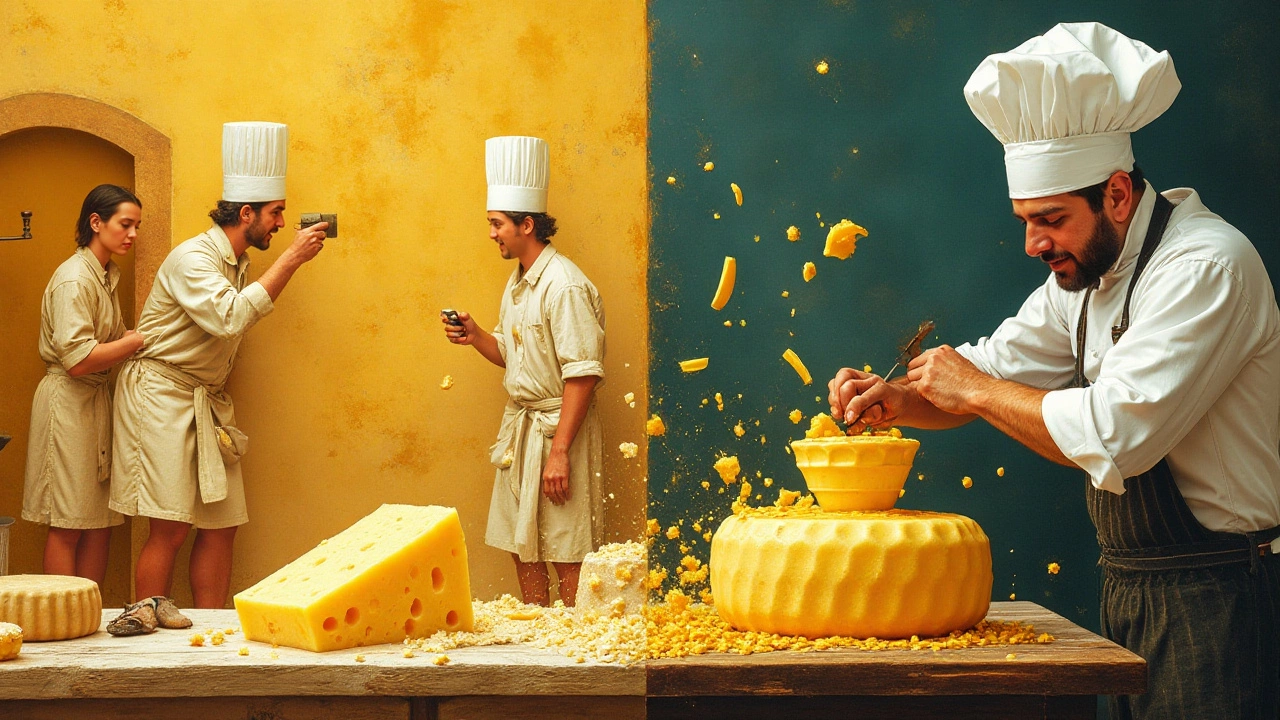
Crafting Unique Flavor Profiles
When it comes to crafting unique flavor profiles, the culinary world has always been a playground for ingenuity. The art of blending the unexpected with the traditional is where true creativity emerges. Using moldy cheese like blue cheese in desserts introduces a daring, yet fascinating dynamic. It challenges the traditional idea of sweetness, pushing the boundaries of what dessert can be. The robust, tangy notes of blue moldy cheese contrast beautifully with the creamy texture and rich sweetness of desserts like Tiramisu, offering your palate an adventure through a landscape of flavor.
Chefs and home bakers alike are discovering that introducing a touch of moldy cheese to a dish can add a layer of complexity that tantalizes taste buds. It's about balance — the cheese must complement the dish rather than overpower it. Imagine the process akin to painting, where bold strokes of taste coalesce to form a cohesive masterpiece. Matching the savory sharpness of moldy cheese with elements like mascarpone and coffee, chefs ignite a dance between flavors, letting each ingredient's identity shine through while crafting something entirely new.
"Cooking is an art, but all art requires knowing something about the techniques and materials." – Nathan Myhrvold
The idea isn't just to surprise diners, but to engage them in a culinary dialogue where each bite tells a story. As with any conversation, finding the right words—or in this case, flavors—is essential. In these unique pairings, acidity, sweetness, and umami must work harmoniously. A touch of honey, a sprinkle of nuts, or even the subtleness of vanilla can all serve as bridges between the sometimes stark differences of moldy cheese and dessert.
To achieve such harmony, it is important to understand the underlying notes and boldness that moldy cheese brings to the table. Start by experimenting with small adjustments. A few crumbles here and a taste test there can lay the groundwork for more daring applications. Consider enhancing the texture and flavor experience by incorporating various textures like crunchy biscotti, offering a satisfying contrast to creamy layers.
And while blue cheese might be the most famous for its unique flair, other types like gorgonzola and Roquefort each contribute their distinct touch. Choosing the right amount of molding, balancing it with sweetness, and finding the right moment to introduce it to the dish are all part of a chef's delicate dance. Such efforts are not just to create a novel dish but to reimagine what a traditional dessert like Tiramisu could be, inviting diners to experience a familiar comfort through an extraordinary lens.
Tips for Cheese in Sweets
Bringing cheese into the world of sweets is like adding a twist to the tale; it opens up new avenues of flavors and textures. To begin, consider the balance of flavors. Sweet and savory combinations can delight the senses if done correctly. For instance, the earthy, pungent notes of blue cheese can counterbalance the sweetness of creams and chocolates quite beautifully. It's all about harmony. Start by incorporating just a hint of the cheese into your existing sweet concoction. Let your palate guide you—too much can overpower while too little might get lost among other ingredients.
A surprising tip is to pair the cheese with fruit-driven desserts. Fruits such as figs, pears, or even a tangy apple can create a complex interplay. The natural sweetness and acidity of fruit work well with the salty, creamy nature of many cheeses. Whip up a simple blue cheese gelato, or pair a rich piece of caramel cheesecake with slivers of moldy cheese if you're ready to take it up a notch. The secret lies in not being afraid to experiment. Baking enthusiasts might not default to moldy cheese in their pantry, but it offers a chance to surprise and intrigue even the most discerning taste buds.
Using cheese in your desserts isn't as far-fetched as it might sound. Consider the idea of infusing sweet sauces or syrups with cheese. Picture a robust cheese sauce drizzled over a slice of Tiramisu or a blue cheese enhanced honey to top off ice cream. Presentation matters too; consider how you cut and style the cheese element on your dish. Before serving, do a taste test and adjust as needed to ensure your culinary creation takes center stage. As noted chef Julia Child once said,
"Cooking is one failure after another, and that's how you finally learn."Remember, it's about trial, error, and tasting every step of the way to achieve that delicate balance of flavors and textures.
Lastly, use your nose as well as your taste buds. The aroma of cheese can be assertive and may affect how you and your guests perceive the dessert. To ease into using cheese in desserts, opt for milder varieties at first. Cheeses like ricotta or mascarpone are popular in sweets for a reason; they add texture without overwhelming other flavors. Once comfortable, turn to the more adventurous cheeses and push the boundaries of what you deem a classic dessert. By understanding the behavior of moldy cheese in different culinary contexts, you can elevate your desserts from simply sweet to intriguingly savory-sweet, adding an element that challenges and delights the senses.

